Is there an ocean under the icy surface of Jupiter's moon Europa?
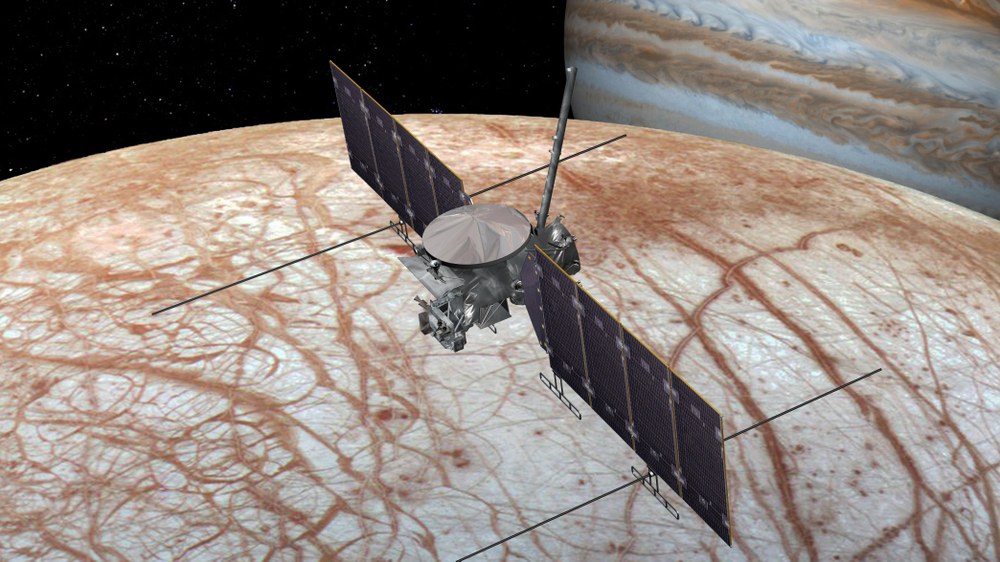
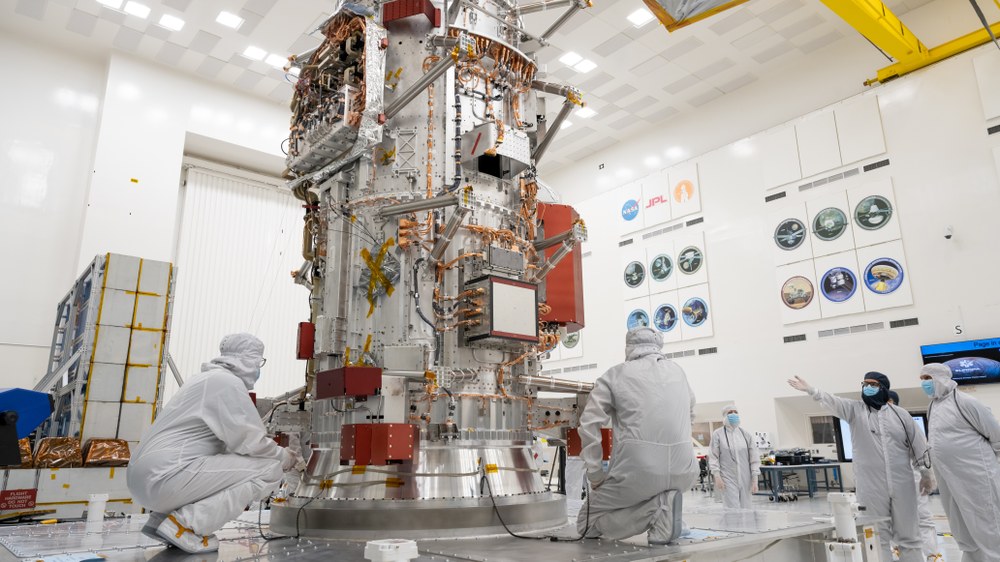
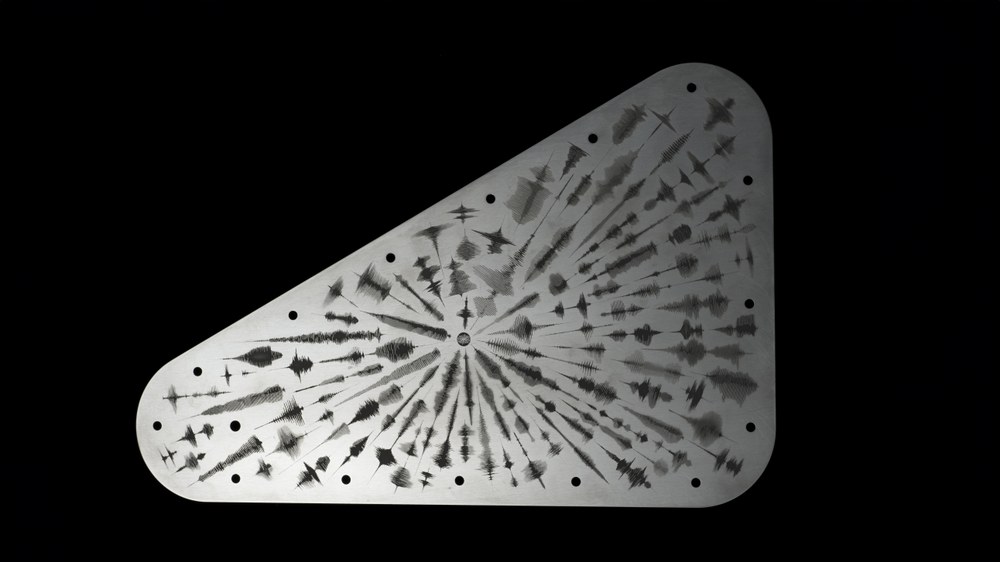
- On 14 October 2024 at 18:06 CEST, NASA's flagship Europa Clipper mission is set to launch from Cape Canaveral, bound for the Jupiter system.
- The spacecraft will arrive in 2030 and conduct 49 flybys of the icy moon Europa through to 2034.
- DLR is contributing to two of the mission's ten experiments.
- Europa Clipper will perfectly complement ESA's JUICE mission, which launched in 2023.
- Focus: Space, planetary research, icy moons, search for habitable zones
+++ NASA's Europa Clipper has set off on the long voyage to Jupiter, where it will investigate its icy moon, Europa. The spacecraft launched perfectly at 18:06 CEST on Monday 14 October aboard a SpaceX Falcon Heavy rocket from Launch Pad 39A at NASA's Kennedy Space Center in Florida. +++
Few moons in the Solar System evoke as much fascination as Europa, one of Jupiter's four largest natural satellites. Covered by a shimmering smooth icy crust, it is thought to harbour an ocean 100 to 150 kilometres deep beneath its surface, which is around minus 160 degrees Celsius and could contain more water than all the oceans on Earth put together. On 14 October, NASA's Europa Clipper space probe is set to embark on its journey to confirm the presence of an ocean beneath Europa's ice shell and gain insights into this 'exotic' celestial body. It might even be able to observe active cryo- or ice volcanism. The German Aerospace Center (Deutsches Zentrum für Luft- und Raumfahrt; DLR) and its Institute of Planetary Research are scientifically involved in the mission.
Europa Clipper perfectly complements the JUICE (Jupiter Icy Moons Explorer) mission launched by the European Space Agency (ESA) in 2023, which will investigate Jupiter's four large moons from 2031, with a focus on the icy moon Ganymede.
Scientists have compelling evidence that an ocean exists beneath Europa's icy crust, and they are eager gather to more data that could confirm it. Europa is the same size as Earth's moon and five times further from the Sun, meaning it receives just four percent (or 1/25th) of the solar energy that we do. Different measurement data and models suggest that despite this, its water is not completely frozen, but forms a vast ocean beneath its icy crust. The tidal forces exerted by Jupiter on Europa may even lead to a dynamic exchange between the ocean under the icy crust and the moon's surface. The ocean's water may in fact be pressurised, reaching the surface through cracks in the ice, where it quickly freezes on the surface.
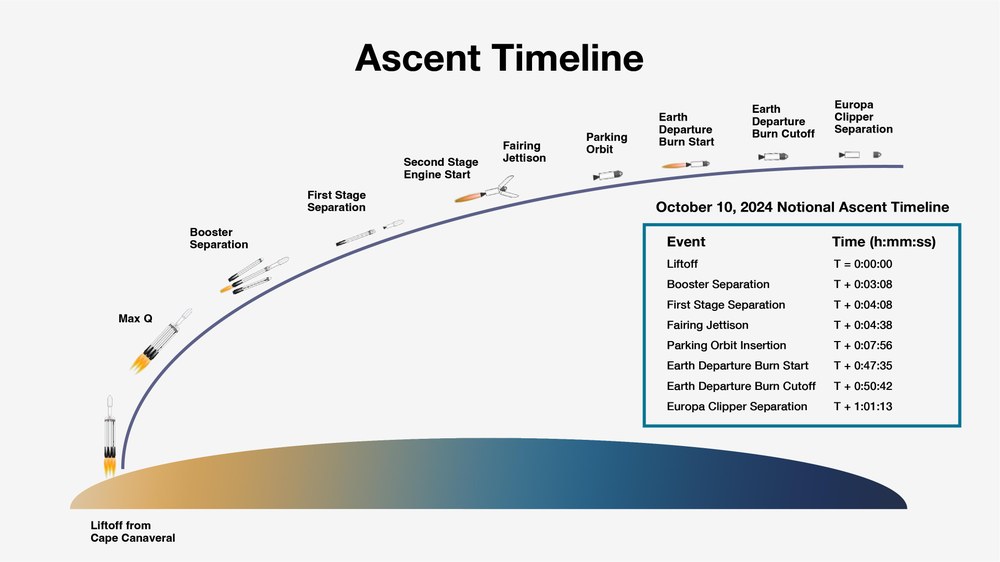
Life in a subcrustal ocean?
Water at the bottom of this subcrustal ocean may also flow through the underlying rocky mantle, which could be heated by radioactive decay, and presumably dissolves minerals. This 'salt water' is released into the ocean, making it salty – similar to the 'black smokers' of Earth's oceans. The tidal deformation of Europa causes the ice on its surface to fracture, which could force the salty water to seep through the cracks and onto the surface of the ice. The crack then immediately freezes over again. The mineral salts precipitated and deposited during this cryovolcanism, or ice volcanism, have already been detected spectroscopically.
The temperatures and chemical properties in the global ocean layer could therefore be similar to those that prevailed in Earth's oceans over three and a half billion years ago and, as far as we know today, this is where life emerged on Earth. An ocean under Europa's icy crust could therefore be 'habitable', i.e. an environment friendly to life in which simple life forms could exist. Europa Clipper will also find out whether the moon actually contains more complex organic, carbon-containing molecules as precursors for life. Some studies suggest that the sub-crustal ocean on Europa has existed even longer than Earth's oceans.
Investigating Europa between 2030 and 2034
After its launch, the over six-tonne probe will first make two gravity assist manoeuvres in the inner Solar System – one of Mars on 28 February 2025 and one of Earth on 2 December 2026 – similar to the JUICE mission. These manoeuvres will accelerate Europa Clipper so much that it will reach the Jupiter system, almost 800 million kilometres from the Sun, on 11 April 2030 after flying almost three billion kilometres. Once there, Europa Clipper will orbit Jupiter and initially complete three close flybys of Jupiter's largest moon, Ganymede. This will allow the orbit to be adjusted to enable the 49 planned close flybys of Europa.
During each flyby, the probe will spend less than one Earth day in the dangerous radiation zone near Jupiter before moving away again to lower-radiation regions. The probe will repeat this process every two to three weeks. On board Europa Clipper are nine scientific instruments and a gravitational experiment that utilises its telecommunications system. All scientific instruments will work simultaneously during each pass.
Ten experiments will investigate Europa
DLR is involved in the mission with Hauke Hußmann and Ana-Catalina Plesa from the Institute of Planetary Research in Berlin. The scientific team of the REASON (Radar for Europa Assessment and Sounding: Ocean to Near-surface) radar experiment is attempting to look directly into Europa's icy shell using high-frequency (HF, 3-30 megahertz) and very high-frequency (VHF, 300 megahertz to 3 gigahertz) radar waves. It is thought that the ice crust is perhaps only 10 to 20 kilometres thick or just a few kilometres thick in places, with the ocean below. REASON emits radio waves that are reflected by structures in the underlying ice and then measures the propagation time, strength and frequency of the waves. This data could confirm the suspected ocean, analyse the thickness of the ice and its internal structure and perhaps even find bod-ies of water in the ice that are connected to the surface and ocean.
DLR is also involved in the 'Gravity/Radio Science' (G/RS) experiment, which Europa Clipper will us to ana-lyse Europa's gravitational field at various distances from Jupiter. G/RS will investigate how the probe's trajectory is altered by Europa's gravity during each flyby. This will make it possible to find out how the moon deforms, which in turn provides information about the internal structure of Europa. During gravity experiments, radio antennas on Earth will send a radio signal to Europa Clipper. The spacecraft will then send signals back to Earth at exactly the same frequency. The frequency of the signal will shift to longer or shorter wavelengths due to acceleration or deceleration caused by Europa's gravity – the 'Doppler shift'. This will provide information about the movement of the probe and therefore about Europa's gravitational field. In the best case scenario, this data will also make it possible to determine the depth of the ocean.
Also onboard Europa Clipper are a visible light and near-infrared camera, a thermal infrared instrument that measures temperatures and could, for example, identify warmer water that has just been pushed to the surface, as well as an ultraviolet and infrared spectrometer to determine the chemical and mineralogi-cal components on the surface. In addition, it carries a magnetometer, a plasma instrument, a mass spec-trometer and a dust detector that can measure tiny particles hurled into space by meteorites or ice particles originating from the ocean. German planetary scientist Frank Postberg from the Free University of Berlin is involved in this experiment, as is Dirk Plettemeier from Technical University Dresden.
Jupiter's moon, Europa
Europa was discovered in January 1610 by Galileo Galilei and the Ansbach astronomer Simon Marius at almost the same time. They both discovered four moons orbiting Jupiter north and south of the Alps on two consecutive clear January nights. Galileo published his observation immediately, Marius with some delay. The four moons (from inner to outer) Io, Europa, Ganymede and Callisto were later named the 'Galilean moons'. With a diameter of 3122 kilometres, Europa is almost as large as Earth's Moon. As of 2024, 95 moons are known to orbit Jupiter.
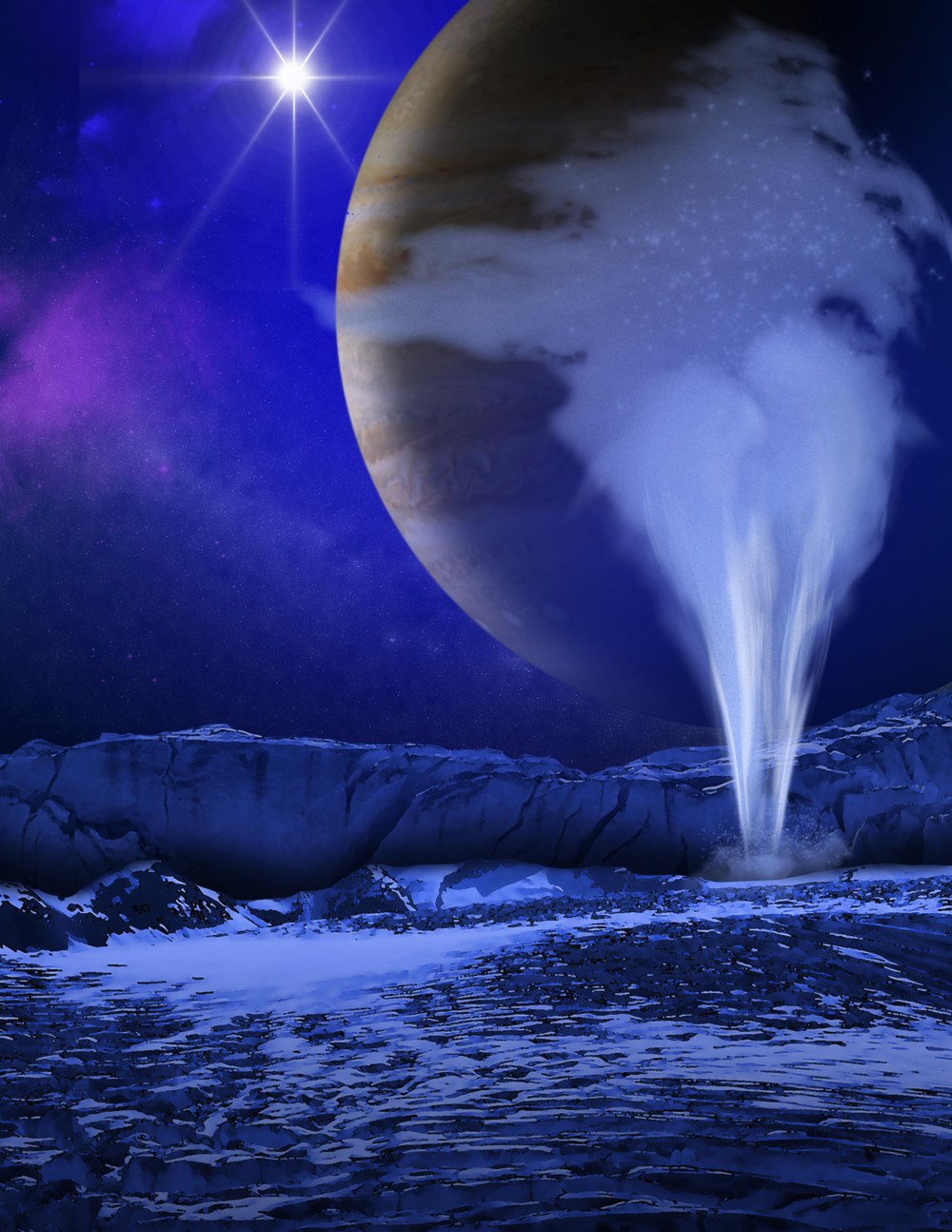
The name Europa – including the continent – comes from Greek mythology. Zeus, the father of the gods, fell in love with the daughter of King Agenor and his wife Telephassa. Transformed into a bull, Zeus carried Europa off to Crete on his back.
The first detailed images of the Galilean moons were taken during the flybys of NASA's Voyager I and II spacecraft in 1979. What was immediately noticeable about Europa was that there were virtually no impact craters on its icy crust. This indicates that the surface is very young and, as it appears today, has not been exposed to asteroid bombardment for long.
Images from several flybys carried out by the Galileo space mission (1995-2003) also showed countless cracks and long, narrow ridges, through which water from the subsurface presumably reached the surface, instantly freezing and thus restoring the surface. Photo-geological investigations, geophysical models and evidence of a magnetic field induced by Jupiter in the ocean with its ionised salt ions led to the conclusion that there could possibly be an ocean up to 100 or more kilometres deep beneath the ice.
Due to the enormous tidal forces that Jupiter exerts on the moon, which orbits only 600,000 kilometres above the cloud cover, and additional resonance effects with the neighbouring moons Ganymede and Io, Europa is strongly deformed as it orbits Jupiter. The moon's crust rises and falls by up to 60 metres during each orbit and its entire body is rolled through, so to speak, so that the water does not freeze – or at least does not freeze completely, a mixture of water and ice is also being discussed – even at this great distance from the Sun on the relatively small body Europa) and the rocks of the lower mantle are heated at the same time.
The gravitational pull on Europa is stronger on its Jupiter facing side. At the same time, moon's orbit is elliptical, so that to Jupiter varies. Since the strength of gravity is the inverse square of the distance, the closer Europa gets to Jupiter, the greater the difference in gravity between the moon's near and far sides. As a result, Europa's spherical shape towards Jupiter is deformed into a more elongated body as it approaches Jupiter and becomes more 'spherical' again as it moves further away from the giant planet. When Europa changes its shape, frictional heat is generated in its interior and its gravitational field changes at the same time – which can be measured.
